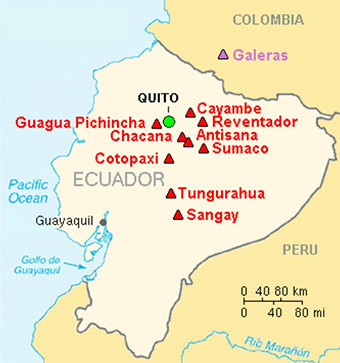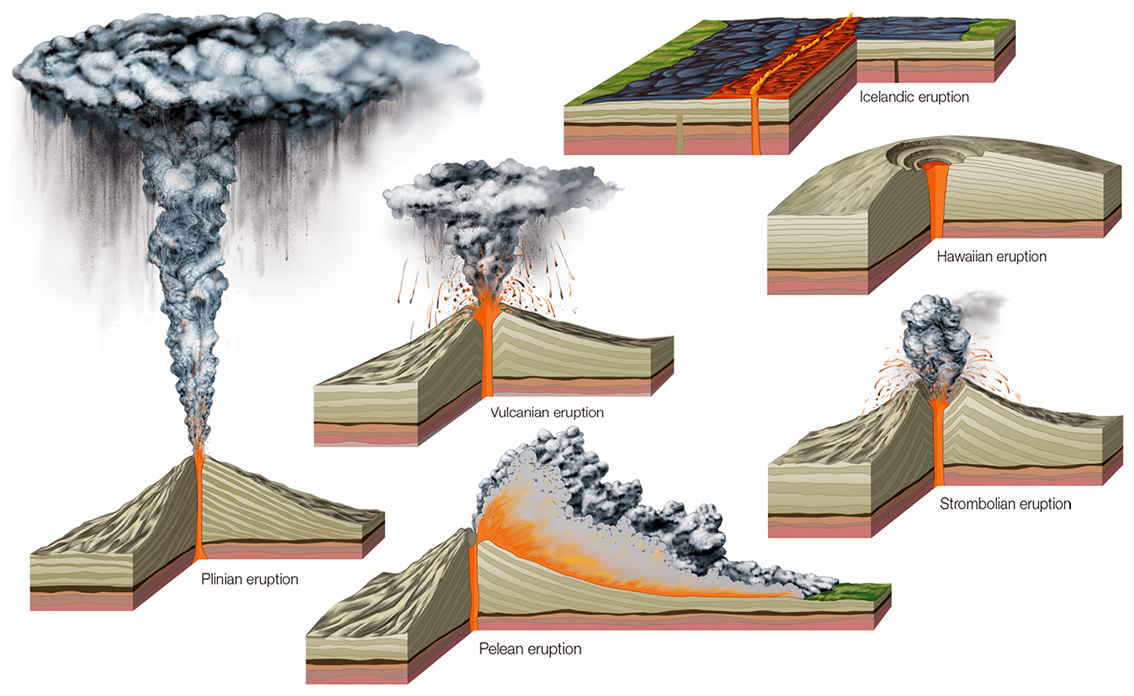Geography
Sangay Volcano: Ecuador
- 13 Mar 2021
- 4 min read
Why in News
Recently, Ecuador’s Sangay volcano erupted.
Key Points
- About Sangay Volcano:

- Sangay volcano is one of the highest active volcanoes in the world and one of Ecuador's most active ones.
- Sangay is the southernmost stratovolcano (a volcano built up of alternate layers of lava and ash) in the northern volcanic zone of the Andes. It is 5230 m high.
- The Andes is the longest above water mountain range in the world and boasts some of the highest peaks.
- Sangay National Park is located in the central part of Ecuador on the Andes mountains' eastern side. It is a world heritage site.
- Eruptions:
- The earliest report of a historical eruption was in 1628. More or less continuous eruptions were reported from 1728 until 1916, and again from 1934 to the present. Sangay has had frequent eruptions in historic times, mostly of strombolian type.
- Other Major Volcanoes of Ecuador:
- Ecuador, part of the Pacific Rim’s “Ring of Fire” region, has eight volcanoes such as Cotopaxi (5,897m), Cayambe (5,790m), Pichincha (4,784m) etc. in its territory.
Volcanic Eruptions
- About:
- Volcanic eruptions happen when lava and gas are discharged from a volcanic vent.
- The most common consequences of this are population movements as large numbers of people are often forced to flee the moving lava flow.
- Types: Volcanic activity and volcanic areas are commonly divided into six major types:
- Icelandic:
- It is characterized by effusions of molten basaltic lava that flow from long, parallel fissures. Such outpourings often build lava plateaus.
- Hawaiian:
- It is similar to the Icelandic variety. In this case, however, fluid lava flows from a volcano’s summit and radial fissures to form shield volcanoes, which are quite large and have gentle slopes.
- Strombolian:
- These involve moderate bursts of expanding gases that eject clots of incandescent lava in cyclical or nearly continuous small eruptions.
- Because of such small frequent outbursts, Stromboli volcano, located on Stromboli Island off the northeast coast of Italy, has been called the “lighthouse of the Mediterranean.”
- Vulcanian:
- It is named for Vulcano Island near Stromboli, generally involving moderate explosions of gas laden with volcanic ash. This mixture forms dark, turbulent eruption clouds that rapidly ascend and expand in convoluted shapes.
- Pelean:
- It is associated with explosive outbursts that generate pyroclastic flows, dense mixtures of hot volcanic fragments and gas.
- The fluidized slurries produced by these eruptions are heavier than air but are of low viscosity and pour down valleys and slopes at great velocities. As a result, they are extremely destructive.
- Plinian:
- This type is an intensely violent kind of volcanic eruption. In this type of eruption, gases boiling out of gas-rich magma generate enormous and nearly continuous jetting blasts that core out the magma conduit and rip it apart.
- The uprushing gases and volcanic fragments resemble a gigantic rocket blast directed vertically upward. Plinian eruption clouds can rise into the stratosphere and are sometimes continuously produced for several hours.
- Lightning strikes caused by a buildup of static electricity are common close to Plinian ash clouds, adding one more element of terror to the eruption.
- Icelandic:






-min.jpg)